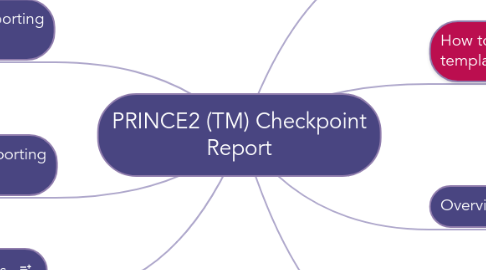
1. This Reporting Period
1.1. Products
1.1.1. Product
1.1.1.1. Product Ref
1.1.1.1.1. [...] #
1.1.1.2. Work undertaken
1.1.1.2.1. [...]
1.1.1.3. Product name
1.1.1.3.1. [...]
1.1.1.4. Date Completed
1.1.1.4.1. [...]
1.1.2. Product
1.1.2.1. Product Ref
1.1.2.1.1. [...] #
1.1.2.2. Work undertaken
1.1.2.2.1. [...]
1.1.2.3. Product name
1.1.2.3.1. [...]
1.1.2.4. Date Completed
1.1.2.4.1. [...]
1.1.3. Product
1.1.3.1. Product Ref
1.1.3.1.1. [...] #
1.1.3.2. Work undertaken
1.1.3.2.1. [...]
1.1.3.3. Product name
1.1.3.3.1. [...]
1.1.3.4. Date Completed
1.1.3.4.1. [...]
1.1.4. Product
1.1.4.1. Product Ref
1.1.4.1.1. [...] #
1.1.4.2. Work undertaken
1.1.4.2.1. [...]
1.1.4.3. Product name
1.1.4.3.1. [...]
1.1.4.4. Date Completed
1.1.4.4.1. [...]
1.1.5. Product
1.1.5.1. Product Ref
1.1.5.1.1. [...] #
1.1.5.2. Work undertaken
1.1.5.2.1. [...]
1.1.5.3. Product name
1.1.5.3.1. [...]
1.1.5.4. Date Completed
1.1.5.4.1. [...]
1.2. Quality Management
1.2.1. [Document activities undertaken this period]
1.3. Lessons Identified
2. Next Reporting Period
2.1. Products
2.1.1. Product
2.1.1.1. Product Ref
2.1.1.1.1. [...] #
2.1.1.2. Work undertaken
2.1.1.2.1. [...]
2.1.1.3. Product name
2.1.1.3.1. [...]
2.1.1.4. Date to be Completed?
2.1.1.4.1. [...]
2.1.2. Product
2.1.2.1. Product Ref
2.1.2.1.1. [...] #
2.1.2.2. Work undertaken
2.1.2.2.1. [...]
2.1.2.3. Product name
2.1.2.3.1. [...]
2.1.2.4. Date to be Completed?
2.1.2.4.1. [...]
2.1.3. Product
2.1.3.1. Product Ref
2.1.3.1.1. [...] #
2.1.3.2. Work undertaken
2.1.3.2.1. [...]
2.1.3.3. Product name
2.1.3.3.1. [...]
2.1.3.4. Date to be Completed?
2.1.3.4.1. [...]
2.1.4. Product
2.1.4.1. Product Ref
2.1.4.1.1. [...] #
2.1.4.2. Work undertaken
2.1.4.2.1. [...]
2.1.4.3. Product name
2.1.4.3.1. [...]
2.1.4.4. Date to be Completed?
2.1.4.4.1. [...]
2.1.5. Product
2.1.5.1. Product Ref
2.1.5.1.1. [...] #
2.1.5.2. Work undertaken
2.1.5.2.1. [...]
2.1.5.3. Product name
2.1.5.3.1. [...]
2.1.5.4. Date to be Completed?
2.1.5.4.1. [...]
2.2. Quality Management
2.2.1. [Document activities planned for this period]
2.3. Work Package Tolerance Status
2.3.1. [Note how the Work Package is performing against its tolerances]
3. Issues and Risks
3.1. [Provide an update on the issues and risks associated with the Work Package]
4. Document information
4.1. Project Name
4.1.1. [name]
4.2. Date
4.2.1. [date]
4.3. Release
4.3.1. Draft/Final
4.4. Author
4.4.1. [author]
4.5. Owner
4.5.1. [owner]
4.6. Client
4.6.1. [client]
4.7. Document Number
4.7.1. [number]
4.8. Revision, Approvals & Distribution
4.8.1. Revision History
4.8.1.1. Revision # [....]
4.8.1.1.1. Revision Date
4.8.1.1.2. Previous Revision Date
4.8.1.1.3. Summary of Changes
4.8.1.1.4. Changes Marked
4.8.1.2. Revision # [....]
4.8.1.2.1. Revision Date
4.8.1.2.2. Previous Revision Date
4.8.1.2.3. Summary of Changes
4.8.1.2.4. Changes Marked
4.8.1.3. Revision # [....]
4.8.1.3.1. Revision Date
4.8.1.3.2. Previous Revision Date
4.8.1.3.3. Summary of Changes
4.8.1.3.4. Changes Marked
4.8.1.4. Date of next revision:
4.8.1.4.1. [....]
4.8.2. Approvals
4.8.2.1. Approval # [....]
4.8.2.1.1. Name
4.8.2.1.2. Signature
4.8.2.1.3. Title
4.8.2.1.4. Date of Issue
4.8.2.1.5. Version
4.8.2.2. Approval # [....]
4.8.2.2.1. Name
4.8.2.2.2. Signature
4.8.2.2.3. Title
4.8.2.2.4. Date of Issue
4.8.2.2.5. Version
4.8.2.3. Approval # [....]
4.8.2.3.1. Name
4.8.2.3.2. Signature
4.8.2.3.3. Title
4.8.2.3.4. Date of Issue
4.8.2.3.5. Version
4.8.3. Distribution
4.8.3.1. Distribution # [....]
4.8.3.1.1. Name
4.8.3.1.2. Title
4.8.3.1.3. Date of issue
4.8.3.1.4. Version
4.8.3.2. Distribution # [....]
4.8.3.2.1. Name
4.8.3.2.2. Title
4.8.3.2.3. Date of issue
4.8.3.2.4. Version
5. How to use this template
5.1. How to share this template with your team
5.1.1. Send an email
5.1.1.1. 1. Click Share this map
5.1.1.2. 2. Select Invite People
5.1.1.3. 3. Write a message
5.1.1.4. 4. Click Invite
5.1.2. Send a link
5.1.2.1. 1. Click Share this map
5.1.2.2. 2. Tick Link to share
5.1.2.3. 3. Copy the link to share it
5.1.3. Export
5.1.3.1. 1. Click down arrow, bottom right
5.1.3.2. 2. Select the export option you want
5.2. How to complete this template
5.2.1. Complete the sections in square brackets
5.2.1.1. [....]
5.2.2. Read these sections for help on this template
5.2.2.1. Purpose
5.2.2.2. Advice
5.2.3. Navigate using the links in Contents
5.2.3.1. Contents
5.3. Attribution
5.3.1. Copyright © AXELOS Limited 2009. All rights reserved. Material is reproduced with the permission of AXELOS
5.4. Get this template here
6. Overview
6.1. Purpose
6.1.1. A Checkpoint Report is used to report, at a frequency defined in the Work Package, the status of the Work Package.
6.2. Contents
6.2.1. The Checkpoint Report should cover the following topics.
6.2.2. Follow ups from previous projects
6.2.3. This Reporting Period
6.2.4. Next Reporting Period
6.2.5. Work Package Tolerance Status
6.2.6. Issues and Risks
6.3. Advice
6.3.1. The Checkpoint Report is derived from the: Work Packages; Team Plan and actuals and the previous Checkpoint Report
6.3.2. A Checkpoint Report can take a number of formats, including: Oral report to the Project Manager (could be in person or over the phone); Presentation at a review meeting (physical meeting or conference call); Document or email issued to the Project Manager; Entry in a project management tool.
6.3.3. The following quality criteria should be observed:
6.3.3.1. Prepared at the frequency required by the Project Manager
6.3.3.2. The level and frequency of progress assessment is right for the stage and/or Work Package
6.3.3.3. The information is timely, useful, objective and accurate
6.3.3.4. Every product in the Work Package, for that period, is covered by the report
6.3.3.5. Includes an update on any unresolved issues from the previous report.
7. This Report
7.1. Date of Checkpoint
7.1.1. [....]
7.2. Period Covered
7.2.1. [....]
7.3. Follow ups from previous periods
7.3.1. [items completed or issues outstanding]
7.3.2. [items completed or issues outstanding]
7.3.3. [items completed or issues outstanding]
7.3.4. [items completed or issues outstanding]
